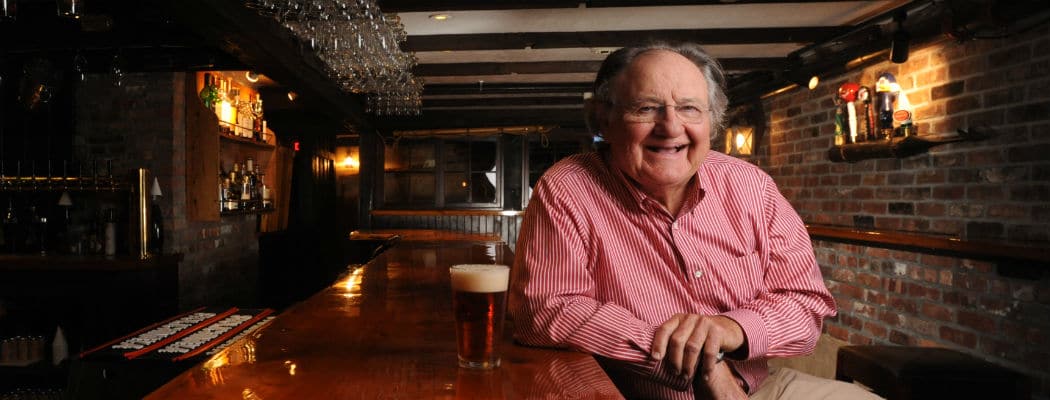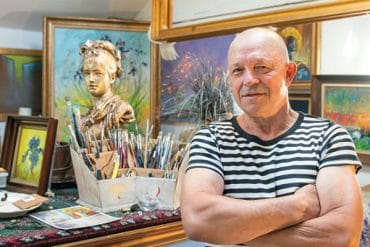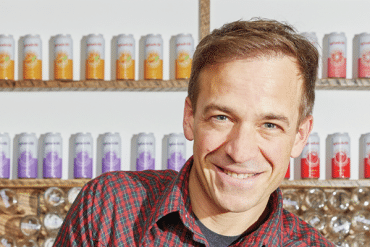Tom Kershaw…everybody knows his name.
Tom Kershaw was not quite sure what to do with his life. Despite receiving a graduate degree from Harvard Business School, Kershaw was unfulfilled by corporate America and eventually resorted to taking a career aptitude test. That’s when bells went off. The results showed that Kershaw’s combination of creativity and love of people made him a perfect fit for the hospitality industry. The test led him to eventually opening The Hampshire House restaurant in Boston’s Back Bay. No test, however, could have predicted that his establishment would end up at the top NBC’s ratings for years to come.
A resident of Beacon Hill for fifty years, Kershaw not only knew the neighborhood, he was a part of it. In 1968, he purchased The Hampshire House, located on Beacon Street in Boston’s Back Bay directly across from the Public Garden. The building included the Bull and Finch Pub on its lower level, which had been built in England and imported to Boston. Kershaw’s bar and restaurant became a local haunt amongst Bostonians, but it would soon be catering to a much larger audience.
On a fateful day in 1981, three gentlemen stopped by Kershaw’s establishment. Their names were James Burrows, Glen Charles, and Les Charles. They were sitcom producers searching for a set for their latest concept, a take on “Duffy’s Tavern,” a radio show out of New York City that would be converted to a television series. When the team laid eyes on the building, met bartender Eddy Doyle, and saw the neighborhood feel of the bar, they immediately concluded that this would be the perfect venue for their show. Eddy Doyle told Kershaw about the men’s visit, but the owner didn’t put much stock in the possibility of anything panning out on the small screen.
 Then in June of 1982, Kershaw received a message on his answering machine. “Call Hollywood,” it said. He contacted Les Charles, who asked for his permission to use exterior photographs of the Hampshire House. Kershaw agreed and signed a release for $1 to allow Paramount access to both interior and exterior images of his 84 Beacon Street restaurant. Still Kershaw was unconvinced that his bar was headed to the big time. That was until Danny DeVito and Rhea Perlman showed up at his bar and told him about the show. Only then did it dawn on him that this was the real deal. Kershaw was eventually shown the pilot, and for the first time saw Hollywood’s adaptation of his local watering hole, which other than changing the name of his restaurant to Melville’s, accurately captured the spirit of his establishment.
Then in June of 1982, Kershaw received a message on his answering machine. “Call Hollywood,” it said. He contacted Les Charles, who asked for his permission to use exterior photographs of the Hampshire House. Kershaw agreed and signed a release for $1 to allow Paramount access to both interior and exterior images of his 84 Beacon Street restaurant. Still Kershaw was unconvinced that his bar was headed to the big time. That was until Danny DeVito and Rhea Perlman showed up at his bar and told him about the show. Only then did it dawn on him that this was the real deal. Kershaw was eventually shown the pilot, and for the first time saw Hollywood’s adaptation of his local watering hole, which other than changing the name of his restaurant to Melville’s, accurately captured the spirit of his establishment.
Up to this point, Kershaw had been an unsuccessful merchant of T-shirts to his local clientele, and he asked if he could have NBC’s permission to print some T-shirts and posters promoting his bar as part of the show. His expectations were modest, and he put a box of shirts behind the bar and hoped he could generate some incidental revenue as a result. At the start, Kershaw’s modest dreams for merchandise sales proved realistic as Cheers’ initial ratings almost killed the sitcom before the end of its first season. It was ranked 74 out of 77 prime time slots, and it looked like it would experience an early last call. Sensing an impending failure, Paramount wheeled out Sam and Diane, played by Ted Danson and Shelley Long, to come to Boston one night and jump-start the publicity. The press caught on, and the show began to build momentum. As they say in Hollywood, the rest is history.
 Cheers became a central part of NBC’s “Must See TV,” earning a top-ten rating during eight of its eleven running seasons, and winning twenty-eight Emmy Awards out of a record 117 nominations. The show became a part of Boston’s fabric and drew 750,000 people a year to tour the bar. It became the sixth most popular tourism destination in the city, ahead of the USS Constitution.
Cheers became a central part of NBC’s “Must See TV,” earning a top-ten rating during eight of its eleven running seasons, and winning twenty-eight Emmy Awards out of a record 117 nominations. The show became a part of Boston’s fabric and drew 750,000 people a year to tour the bar. It became the sixth most popular tourism destination in the city, ahead of the USS Constitution.
From an economic perspective, Kershaw’s somewhat casual request of Paramount to obtain the T-shirt and poster merchandising rights proved prophetic. His T-shirt business became an industry unto itself, as the restaurant produced $4 million in food revenue annually, yet $13 million in merchandise. He built an entire staff just to handle orders, and over the life of the show, sold over $100 million in T-shirts. Paramount, through Host International, then opened up Cheers bars in airports, further enhancing the brand and Kershaw’s pocketbook.
Kershaw made his first trip to Nantucket in 1969 and fell in love with the island. He’s been a summer resident ever since. When asked what his favorite restaurants in Nantucket are, he immediately responded, “my home.” However, he speaks fondly of the old bar at 21 Federal and the restaurant at Galley Beach. The logical question was whether he had been tempted to open up a restaurant on Nantucket, but he makes it clear that the island is a place for his relaxation, and doing business here would likely diminish his downtime.
Now in his seventies, Kershaw relishes the ongoing success of his two restaurants in Boston — Cheers and 75 Chestnut Street — and his stunning penthouse atop 79 Beacon, which provides a sweeping view of the park. While fate has clearly smiled on Tom Kershaw, he put himself in a position to get lucky and has been smiling ever since. To his success, we simply say, “Cheers.”






